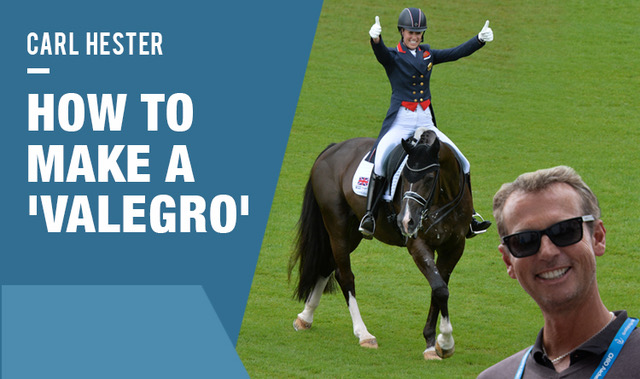
Christopher Hector wants the recipe…
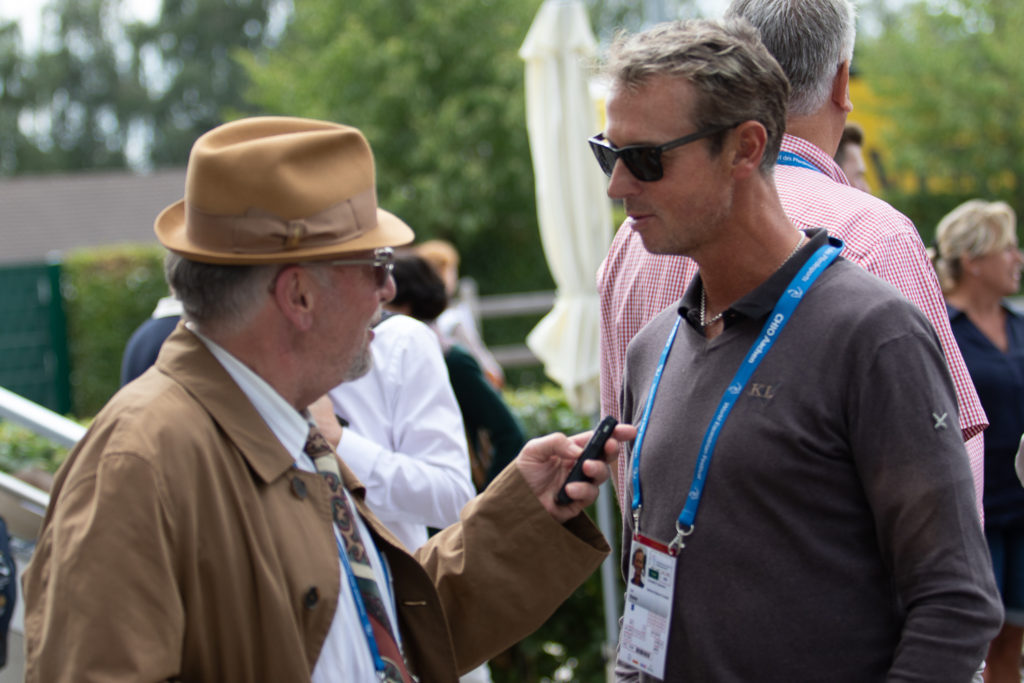
Foto: Kim C Lundin
I can’t afford to buy a Valegro, I have to make my own, what is the recipe?
“First of all go to the country you know best and in our case, that is Holland. We know from a lot of the horses we’ve had, that if you can find your Ferro lines, then you are going to get a high level of work ethic, so that’s where you start.”
“What has changed is that fifteen years ago, yearlings and two year olds were your picks. You could have what you liked, they were all the same price virtually, because they were unknown. Everyone now realises that you might as well wait until they are three. Gone are the days when you could do your bargaining out the back of the stallion shows for the ones that didn’t go through – which is where most of ours came from. But you can still find them. I figure you are working on a budget Chris…”
A tiny budget…
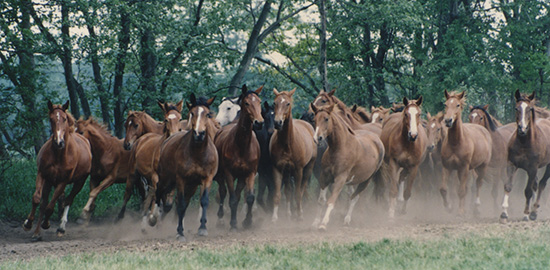
“Okay a tiny budget, best to go in November / December when it is getting a bit wintery, and the farmers need to clear out some stock – the two-and-a-half-year olds. When you go to buy, you just see them loose, that’s how you’ve got to make your selection. You’ve got their shape, and the paces when they move loose. Not when it’s been locked up in a stable for a week, so it goes with its tail in the air, front legs, hind legs going everywhere. Make sure we are looking at it when it is tired so you can see what the natural movement is.”
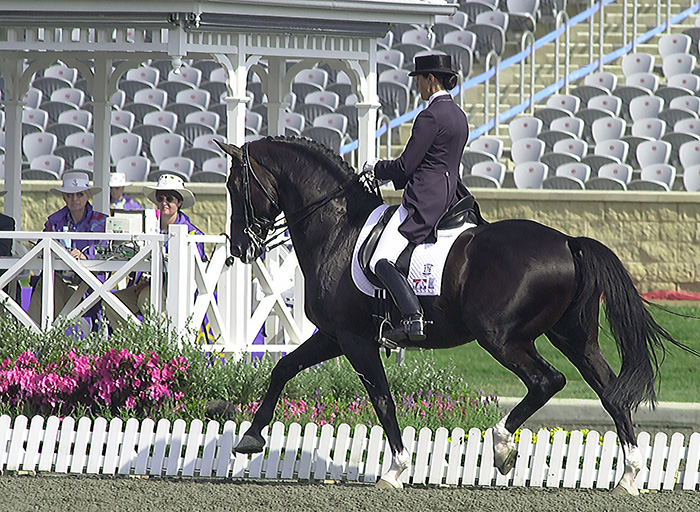
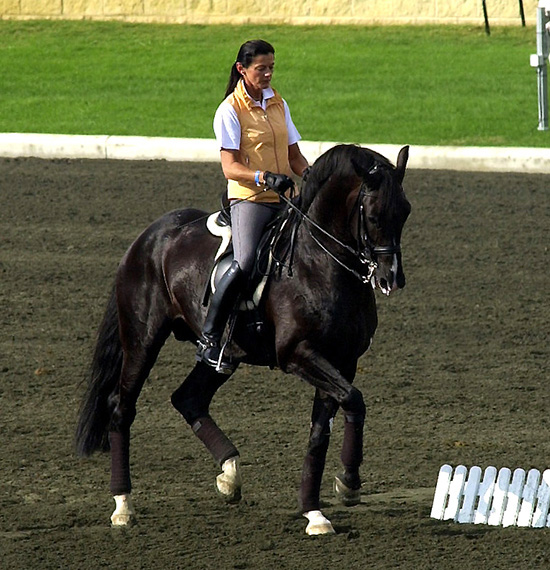
Ferro – that’s the bloodline we are looking for…
I remember you once told me that you could buy one in Holland with a fabulous trot with the farmer running along behind rattling his handbag, but when you got to England the trot was still back in Holland…
“That’s right, where did we lose that trot? But we don’t need to worry about the trot, what we need is a good walker and a good canter, we need that hind end engine, that’s what we really need. It’s the mechanics of the hind end. You’ve got to know when you are looking at a walk, how will that walk make a piaffe? And you’ve got to know when you are looking at a trot, how will that trot make a passage? Then when you are looking at the canter, how will that canter make a flying change and a pirouette? Those are the visions you need to have when you are looking at a young horse for the future.”
story continues below the advertisement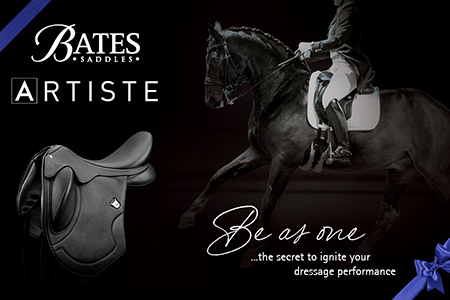
“It’s the understanding of mechanics that is important. Let’s say you can teach any horse to do a flying change if it has got a reasonable canter, but which one’s canter is for a high mark – and which one’s canter is for a low mark. Even if they are both straight and correct, one is going to have a higher mark for its expression.”
“It is just trying to find that vision for the future when you are looking at something that is not ridden, because that’s what I assume you are going to buy, and there’s no guarantees then.”
Is expression related to a little bit hot?
“It’s related to the hotness that allows you good collection on the hind leg, that allows you then to develop expression from good collection. Of course the horse has to want to work – but that is what you won’t know, that’s when you’ve got to rely on bloodlines because if you can’t ride it, how are you going to know if it is a worker?”
We’ve got it home, what are we going to do next?
“It’s two-and-a-half, we are going to put him out for a year, we are going to bring him in when he is three-and-a-half, and we are going to get my human cannonball up the road to get on it. Six weeks, hopefully, is the prep time. They’ve got six weeks to get on it so we can see it walk, trot and canter around the school. That’s all we want at three-and-a-half, come in October, that will take us up to the middle of November, then we will chuck it out again.”
When you say out, you mean out out, no stable at night…
“Mostly ours go out because we have places around us that specialise in taking young horses, they do have barns available because we have had some fairly heavy snow the last few winters, which we never used to have. Out is preferable and they come back in the spring when they are four years old.”
“We aim to have them back in by the beginning of April at four years old. If the start was good last year, and everything has gone according to plan, then it would just be a question of lunging for a few weeks. Calm. Getting back on and off, and then off we go.”
“We leave ours with the breakers at the moment because they do hacking, turn out, and just getting them educated in the school. It’s not a dressage program at four years old. If it is particularly talented, let’s say your one looked like Valegro at four – wow, that’s got a natural balance, that can trot, it can canter, and it sort of walks, because he had a bouncy walk in those days, then we might think about doing some young horse classes.”
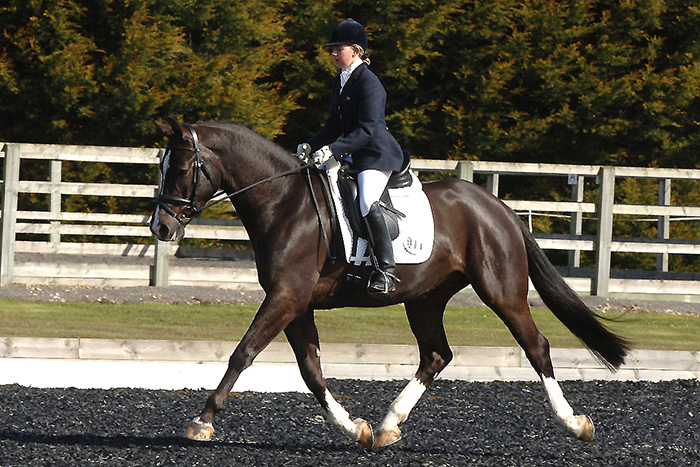
Lucy Cartright and Valegro back in 2005
(Image Kevin Sparrow)
“Your aim will be like mine, a future Olympics, I’m not interested in whether it wins a young horse championship at four, five, six. Let’s say it might because it has these hind legs that show these three nice quality paces, for the four-year-old year, if I run along the Valegro lines, we did do some four year old classes, which involved traveling half an hour up the road, finding a nice local class, getting qualified for the final in September. So then in September it will have the first major show of its life. We all can see the temperament is amazing, we don’t have to do a lot about that, we all know that dressage training should make a good temperament, this one has a natural one.”
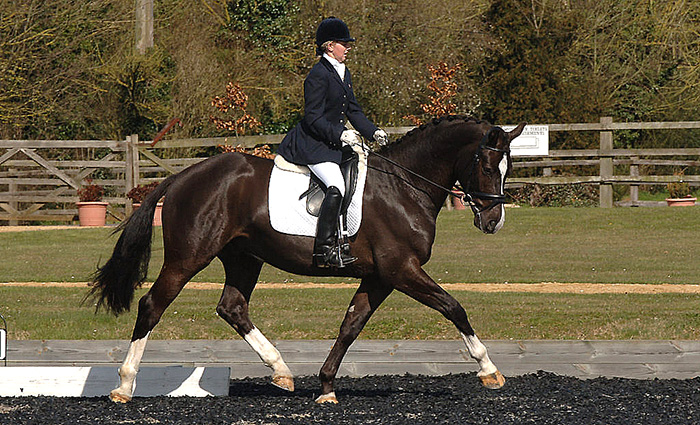
(Image Kevin Sparrow)
“The winter of the four-year-old will involve a lot of work to make sure the horse is all-rounded, well rounded. So we do three or four days in the arena at the most, the rest is involved with just hacking and turnout.”
The arena work, what does that look like?
“Transitions, a little bit of leg yielding, so that the lateral work – just from the leg yield is established – so you can move the horse around. You can start to think about the suppleness. Contact, of course, that comes first, safety, that you can actually stop and start your horse with a minimum of fuss, without contact issues. Our training at this stage would be at the most half an hour’s riding. That doesn’t mean that the horse stands in the stable for twenty-three and a half hours, I’m lucky, we still have turnout all year round, so we can keep them out. Again, veterinary advice, keep your horse moving – that’s why we don’t need to work them very hard.”
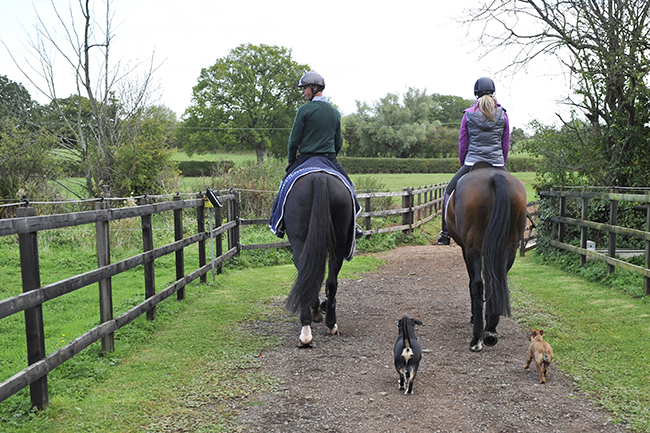
(photo – Kit Houghton)
“The ideal thing of course is to put Charlotte on your horse, and in that way the work is done in twenty minutes. She’s preparing it nicely for you now Chris, and because she is such a balanced rider, and so clever that your horse understands the work immediately, we have what is the preferred situation in life, an experienced rider on a inexperienced horse. So we keep paying Charlotte at the moment to do her job.”
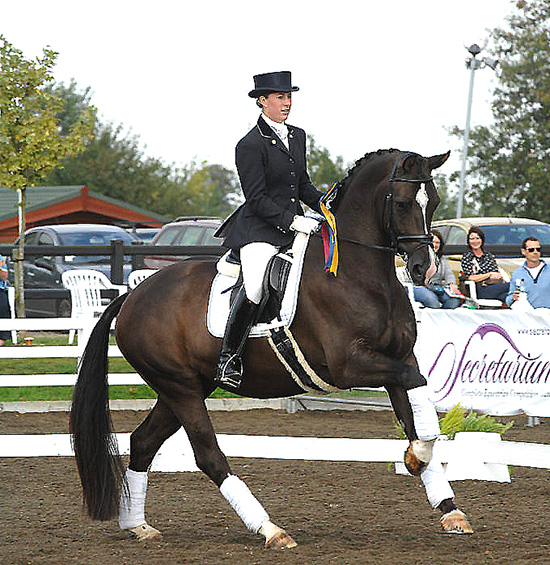
Charlotte and Valegro back in 2007 (Image – Kevin Sparrow)
“Five years old and now our jockey has some ambitions, she can see that they can win some young horse classes. I still feel the world young horse championships is not for my horses, and you shouldn’t think about it for your horse – we are always thinking about Grand Prix and a gold medal, but we might go to our national young horse championships. Five years old involves just doing some local shows, he seems to have an amazing temperament, so what’s the point of doing more than the three qualifiers to qualify for our September championships? I feel our September championships at home are the ones that educate the horses the best, it’s four days, over 500 horses there, flags, arenas, the whole thing. It’s a good education, to finish up the year there in September, then it’s back to the winter again.”
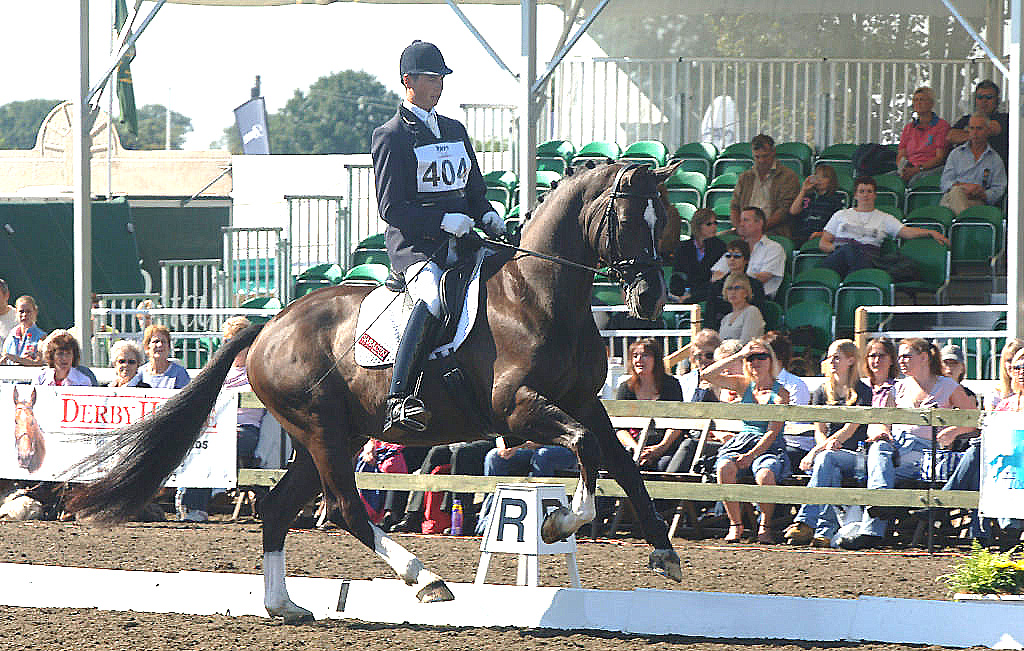
And yes, Carl got to ride him too – this was taken at the British Nationals in 2006
when he was a four year old (Image – Kevin Sparrow)
“Six years old and we are starting to think about flying changes. The half passes are improving. We always think about seven years old as being the age where we start to prepare them with a little bit more collection. Seven years old, in our Valgero’s case, that involves putting the tempis in. Of course, we bought on the basis of the canter, that was the best pace of the three, so the changes come along absolutely swimmingly by then. By the end of his seventh year, he’s doing fours, threes and twos and nice working pirouettes.”
Do you still do counter canter in that period?
“Not really. I am not a fan of counter canter. Counter canter is a good obedience exercise, I don’t find it a particularly interesting exercise to improve canter. I think what happens with most people is that they tend to ride the counter canter faster and faster and they get longer and longer. Our new Valegro has this huge canter and the more we do counter canter, the more it unbalances it, the more it puts it on the forehand. It’s good for obedience because once they start to learn changes they think they can do changes here there and everywhere, and that’s when I would use it, more for obedience.”
“Where counter canter is brilliant is teaching someone to keep a horse straight in transitions from extended to collected. You put the horse in counter canter on the wall. I don’t know if you have noticed, but where we are sitting here in the stand at Aachen is on this perfect diagonal watching the extended cater in the Grand Prix and I would say, that here at Aachen, I probably saw four or five very straight extended canters with a straight collection and change, what we saw a lot of, was lots of extended canters on the diagonal then quarters to the right at the end, and then they do the change – so the horse finishes almost in a half pass to the right with the less experienced riders. So that is where your counter canter is a brilliant exercise: get on your left rein, on your right canter, extend down the wall and teach the horse to collect on the wall, so he can’t throw his quarters out to the outside. That is a really useful exercise.”
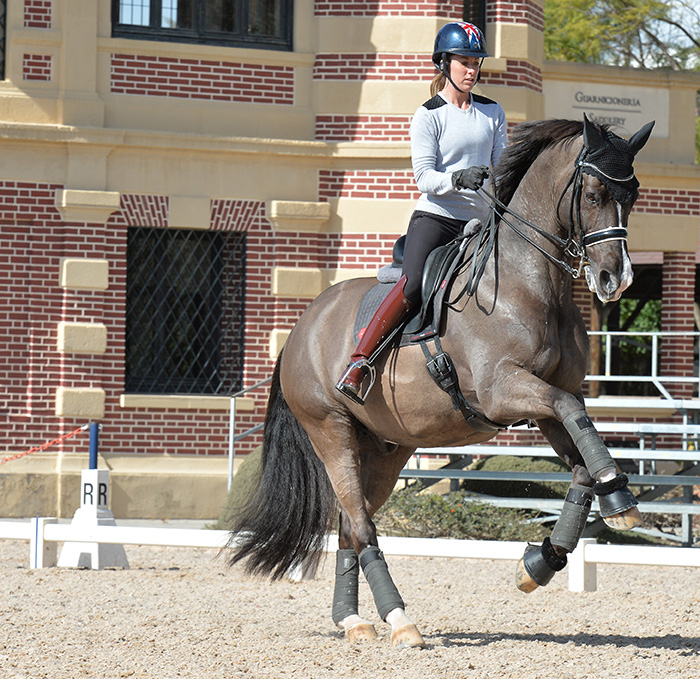
Valegro and Charlotte at Jerez in 2016
“By the age of eight, we can think about some international small tour competitions. Sadly Jerez in Spain hasn’t run for the last few years… it used to be our favorite hunting ground and education ground for all our horses. I miss it terribly.”
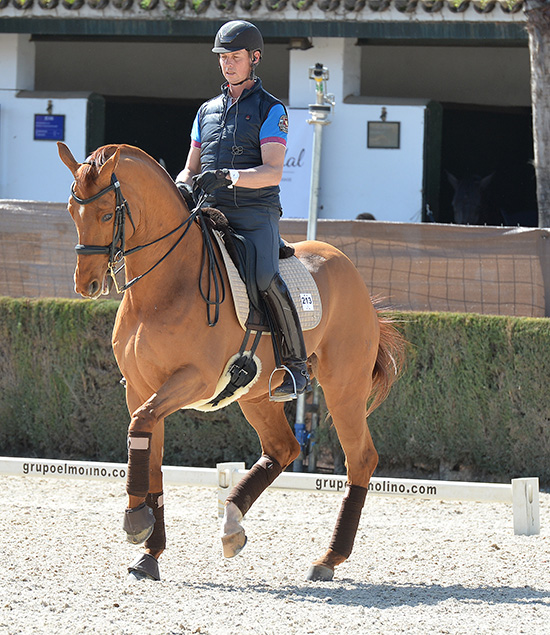
Carl at Jerez, schooling Wanadoo
“I would do everything I could to get them to run that show again, and I would encourage all our competitors in Britain to come down with our new Valegro, and take their horses down and educate them. Over the period of time, the horses learn a show is relaxation, it’s not just take them there in the lorry, do a class with clapping and prize-givings, then back on the lorry. At Jerez it was a nice education that has now gone missing, but we will try and re-instate that for this new Valegro because he needs a good education.”
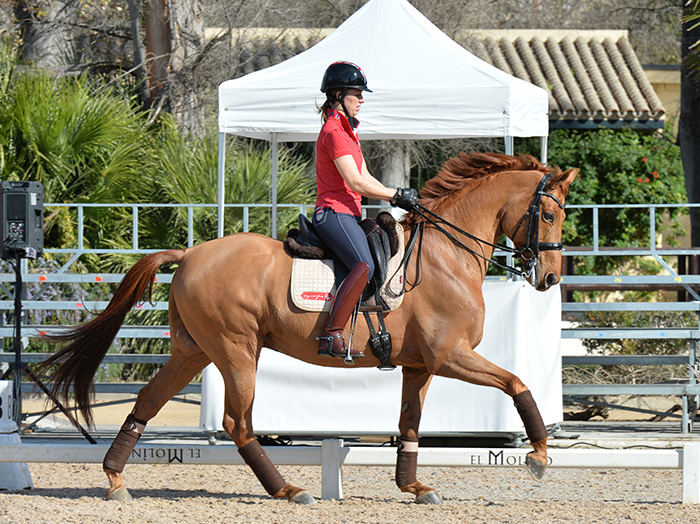
Charlotte and Barolo at Jerez, a great place to educate youngsters
“It’s what we did with Valegro, we took him down for the three weeks, he won all the small tour, suddenly people started say, what’s that horse?! Chris, your tiny budget has now developed into a much bigger budget, you’ve got people ringing you all the time, are you interested in selling that horse? We haven’t told them yet whether it piaffes or passages, we are sticking to our small tour.”
“In our eight-year-old year, we would think about trying to win the national Inter 1 and Prix St Georges championships.”
Have we started with piaffe / passage?
“We have started of course at eight years old, being a very strong horse behind, the best things that are starting to develop now are like being able to canter the horse much more on the spot, so he learns to carry himself, so we are working on getting that extra bit of lightness, and now introducing more passage work into the trot to develop more collection and more expression.”
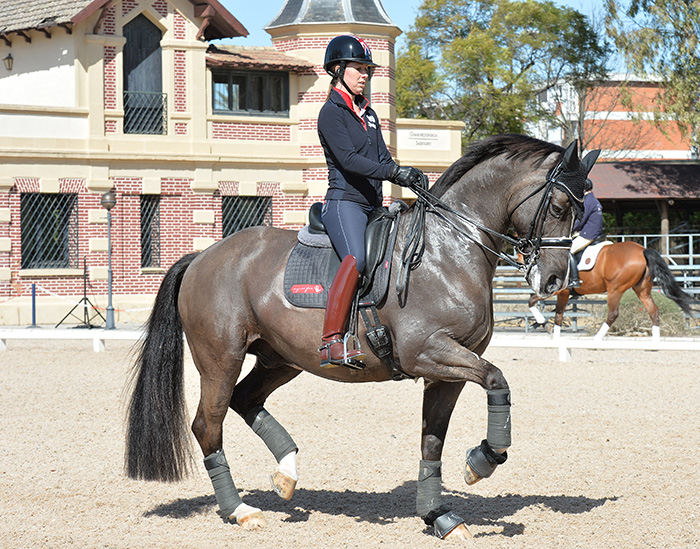
But we are not one of those obsessive persons who say you MUST do piaffe before passage…
“Yes, I am a piaffer first before passage, but we would run them along at the same time. What has developed for me is a little bit more know-how with the in-hand work. Once a month we have someone come to the yard so we can say, okay let’s have a look. Do we need to be working on this? The reactions feel perfect so do we really need to do this regularly or will this just be a natural? Right now, it looks like it might be a natural.”
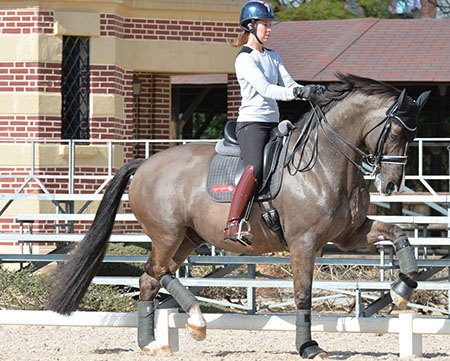
“It’s all going so smoothly that by the time it is nine years old, with good training, with soundness, and the horse’s temperament feels really right at every level, it’s done, it is now ready to enter the Grand Prix arena.”
“We’ll go to a Championship, no one will know who it is… we might have someone like Chris Hector say, where the hell did that horse come from all of a sudden? I remember you saying that in 2011 when we took Valegro to the Europeans. If it is a nice European championship year, that would be perfect at nine years old. It is going to be in Holland, that’s very close, we’ll nip across the water and show it to the world – knowing that in the following year, with another year of consolidated work at Grand Prix, you get your gold medal…”
That show in 2011 – Rotterdam and the European Championships, and Charlotte and Valegro announce that they are an international superstar combination…
Roslyn Neave took the great photos.
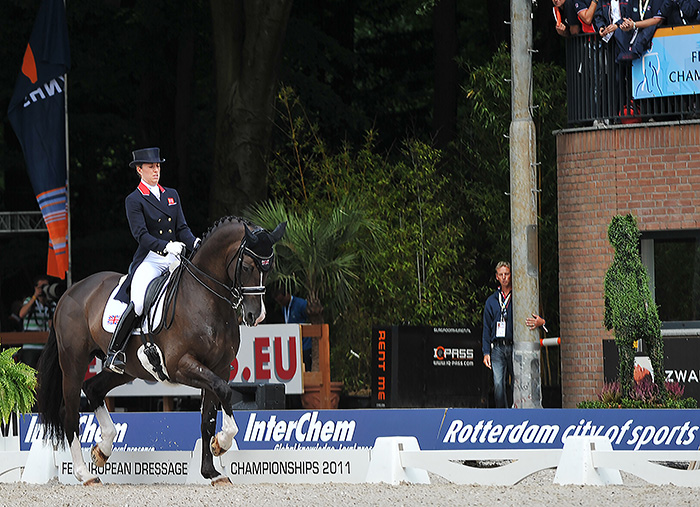
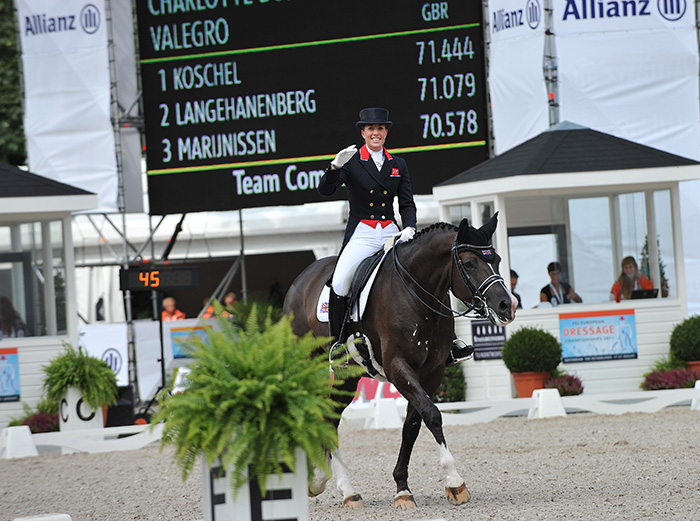
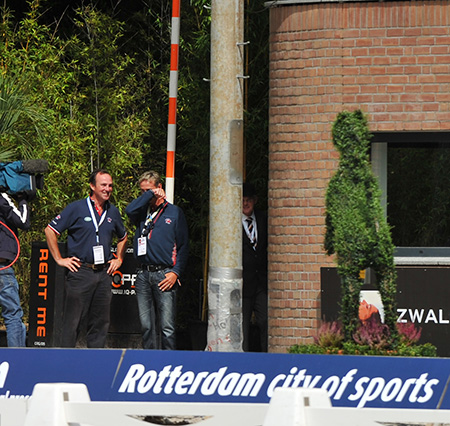
Tears of joy for Carl after Charlotte’s test at the Europeans at Rotterdam
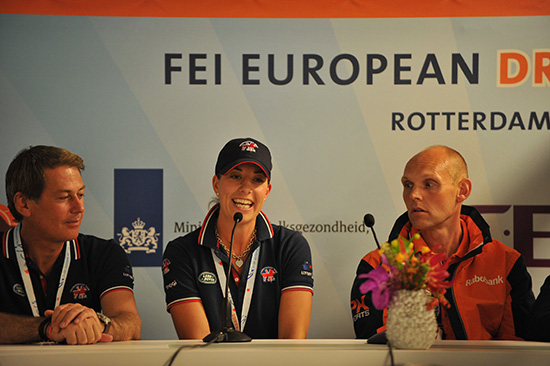
The first Press Conference
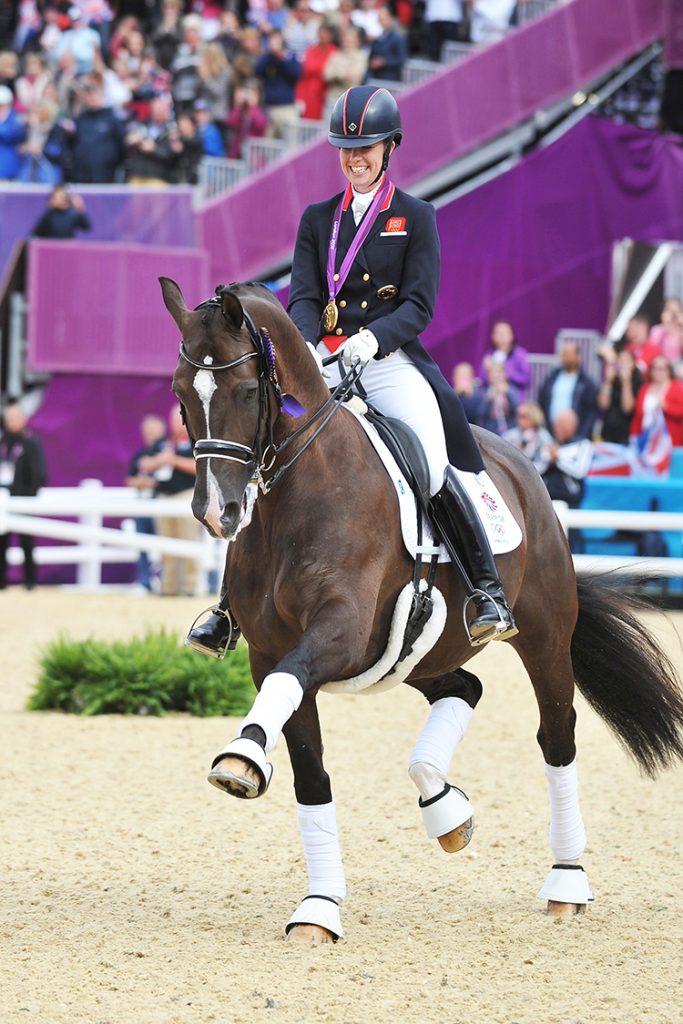
And on to Gold at the London Olympic Games
Want to make your own Valegro? Contact International Horse Breeders now for this season! Go to www.ihb.com.au and choose a proven stallion with the best European bloodlines like:
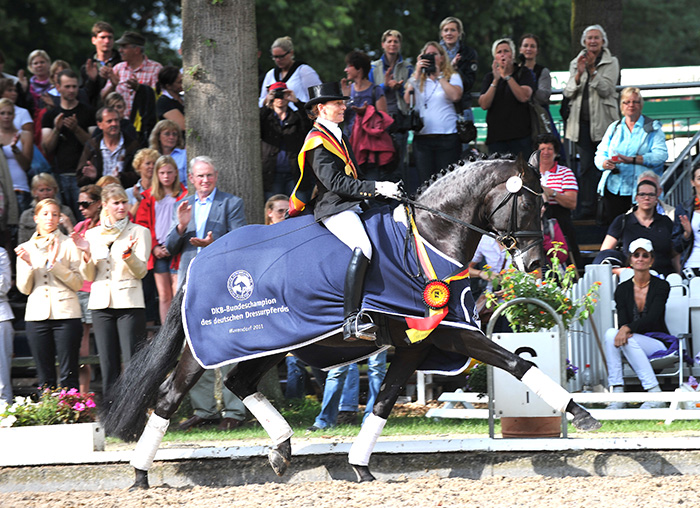
Fürstenball
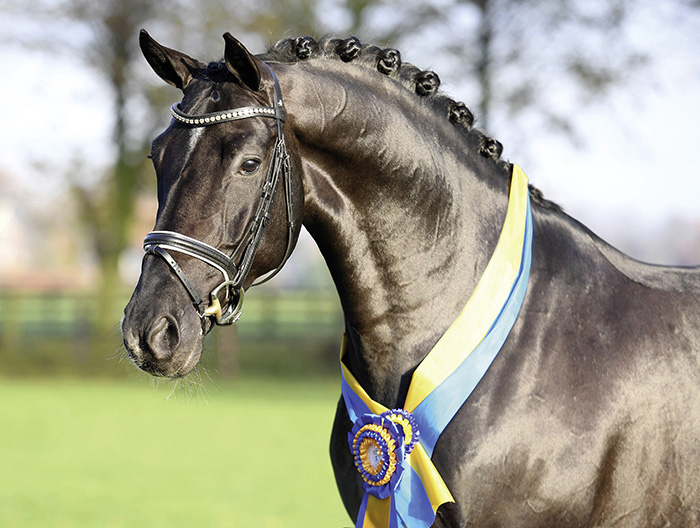
Total Hope




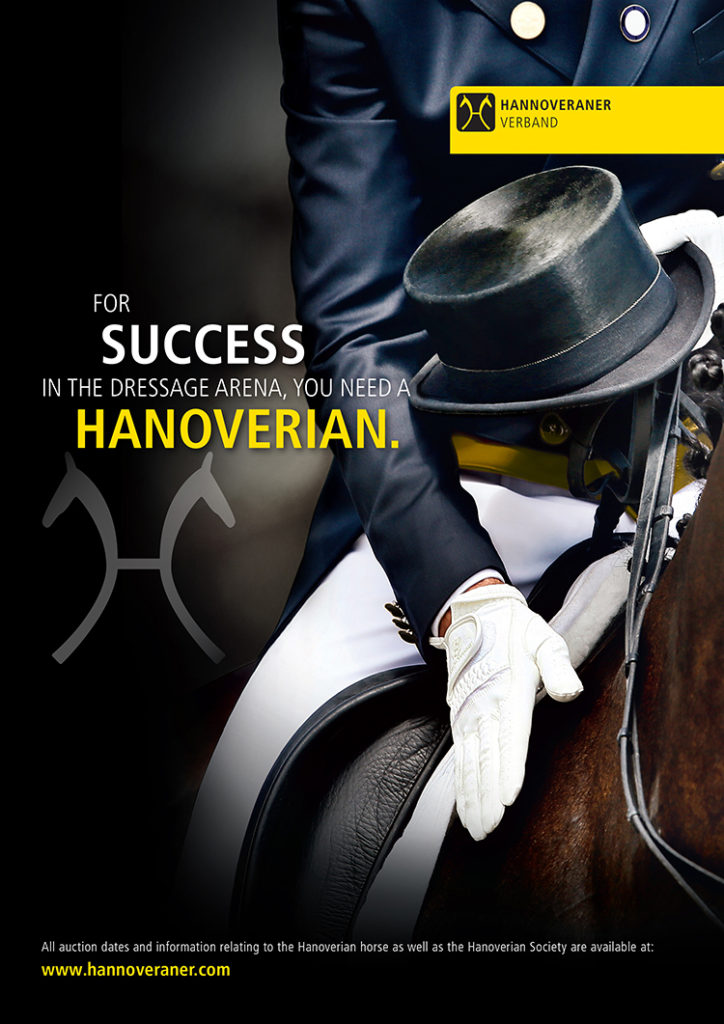
Fairytales do come true 🦄❤️ Thanks for a fab interview with The Man. Can’t wait to welcome him to Perth in a few weeks 👏👏👏👏
Terrific read. Thank you.
WOW what a fantastic article. One of your best. Thanks to you and Carl. So easy to read and follow the progression.
Great article – thankyou, thankyou
Wow so intresting to read!
Great article thank you